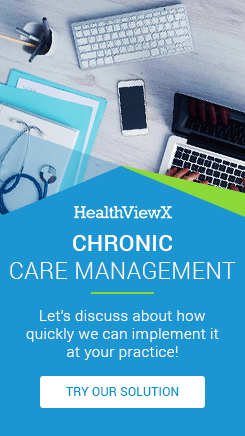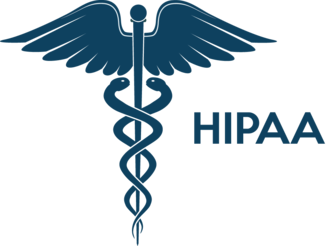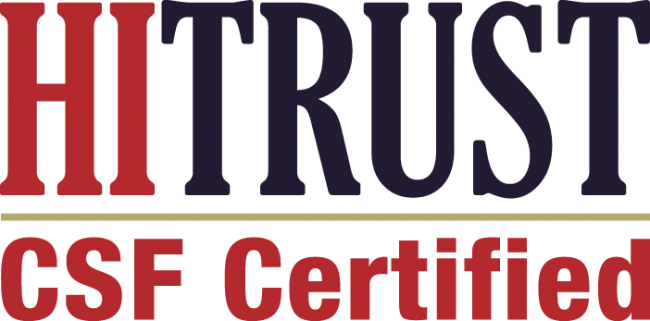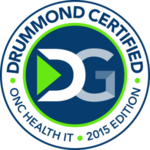In today’s healthcare landscape, seamless data flow between systems isn’t just a convenience—it’s a necessity. The integration of referral management systems with Electronic Health Records (EHR) represents a critical junction where patient care coordination meets technological efficiency. Yet, despite its importance, this integration remains one of the most challenging aspects of healthcare IT implementation.
The Critical Need for EHR-Referral Management Integration
Healthcare providers manage thousands of patient referrals annually, each requiring careful coordination between primary care physicians, specialists, and healthcare facilities. When referral management systems operate in isolation from EHR platforms, healthcare organizations face significant obstacles that directly impact patient outcomes and operational efficiency.
The modern healthcare ecosystem demands real-time data exchange. Physicians need immediate access to patient histories when making referral decisions, while specialists require comprehensive background information before patient consultations. Without proper integration, this critical information exchange becomes fragmented, leading to delayed care, redundant procedures, and frustrated patients navigating disconnected systems.
Common Integration Challenges in Healthcare Systems
Data Silos and Information Fragmentation
One of the most persistent challenges in healthcare integration is the creation of data silos. When referral management systems cannot communicate effectively with EHR platforms, patient information becomes trapped in isolated repositories. This fragmentation forces healthcare providers to manually transfer data between systems, a process that is both time-consuming and error-prone.
Healthcare professionals often find themselves logging into multiple systems to piece together a complete patient picture. A primary care physician might need to access the EHR for patient history, switch to the referral management system to track specialist appointments, and then return to the EHR to document outcomes. This workflow inefficiency not only reduces productivity but also increases the likelihood of information gaps that could impact patient care.
Technical Compatibility Issues
Healthcare organizations typically utilize EHR systems from different vendors, each with unique data formats, communication protocols, and integration capabilities. Legacy systems present additional challenges, as they may lack modern API support or use outdated data exchange standards. These technical incompatibilities create significant barriers to seamless integration.
The healthcare industry’s adoption of various interoperability standards, while beneficial in the long term, creates short-term complexity. Organizations must navigate FHIR, HL7 v2, CDA, and other standards while ensuring their referral management systems can communicate effectively across this diverse technological landscape.
Workflow Disruption and User Adoption
Integration challenges often manifest as workflow disruptions that affect daily clinical operations. When systems don’t communicate seamlessly, healthcare providers must adapt their workflows to accommodate technical limitations. This adaptation can lead to resistance from clinical staff who view integration as an additional burden rather than a productivity enhancement.
Training requirements multiply when integration is incomplete or unreliable. Staff members must learn to work around system limitations, creating workarounds that may compromise data integrity or care coordination. These workflow disruptions can significantly impact user adoption rates and overall system effectiveness.
Data Security and Compliance Concerns
Healthcare data integration must navigate complex regulatory requirements, including HIPAA compliance, state privacy laws, and emerging data protection regulations. Ensuring secure data transmission between referral management systems and EHR platforms requires robust encryption, access controls, and audit capabilities.
Organizations must balance accessibility with security, ensuring that integrated systems provide seamless data flow while maintaining strict privacy protections. This balance becomes particularly challenging when integrating cloud-based referral management solutions with on-premises EHR systems, as data must traverse different security domains.
The Business Impact of Poor Integration
Financial Implications
Poor integration between referral management and EHR systems creates significant financial burdens for healthcare organizations. Administrative costs increase as staff spend additional time manually entering data across multiple systems. The average healthcare organization loses thousands of hours annually to redundant data entry, translating to substantial labor costs.
Revenue leakage occurs when referrals are lost or delayed due to system disconnects. Specialists may experience no-shows when patients don’t receive proper referral documentation, while primary care providers lose follow-up opportunities when specialist reports aren’t automatically integrated into patient records.
Patient Experience Degradation
Patients suffer when healthcare systems don’t communicate effectively. They may arrive at specialist appointments without proper documentation, leading to appointment delays or cancellations. The frustration of repeating medical histories across different providers reflects poorly on the entire healthcare organization.
Care continuity breaks down when referral outcomes aren’t automatically integrated into primary care records. Patients may receive conflicting treatment recommendations when their various healthcare providers don’t have access to complete, up-to-date information.
Clinical Decision-Making Impact
Healthcare providers make better decisions when they have access to comprehensive, real-time patient information. Poor integration limits this access, potentially compromising clinical outcomes. Specialists may order unnecessary tests when they lack access to recent diagnostic results, while primary care providers may make suboptimal referral decisions without visibility into specialist availability or expertise areas.
HealthViewX Referral Management: A Comprehensive Solution
HealthViewX Referral Management addresses these integration challenges through a sophisticated platform designed specifically for seamless EHR connectivity. The system recognizes that referral management cannot exist in isolation—it must function as an integrated component of the broader healthcare technology ecosystem.
The platform provides comprehensive referral workflow management, from initial referral creation through specialist consultation and outcome documentation. Unlike standalone referral systems, HealthViewX is built with integration as a core architectural principle, ensuring that every feature and function considers EHR connectivity requirements.
Key Features and Capabilities
HealthViewX Referral Management offers automated referral processing that eliminates manual intervention wherever possible. The system can automatically populate referral forms with patient demographic and clinical information pulled directly from EHR systems, reducing data entry errors and accelerating referral processing times.
Real-time status tracking provides visibility into referral progress for all stakeholders. Primary care providers can monitor referral status without leaving their EHR workflow, while patients receive automated updates about appointment scheduling and preparation requirements.
The platform includes intelligent routing capabilities that match patients with appropriate specialists based on clinical criteria, geographic preferences, and network participation. This matching occurs using data synchronized from EHR systems, ensuring that referral decisions consider the complete clinical picture.
Document management features ensure that all referral-related documentation flows seamlessly between systems. Specialist consultation notes, diagnostic results, and treatment recommendations automatically integrate into primary care EHR records, maintaining care continuity.
HealthBridge Interoperability Engine: The Integration Foundation
The HealthBridge Interoperability Engine serves as the technological foundation that makes seamless EHR integration possible. This sophisticated middleware solution addresses the complex technical challenges that have historically made healthcare system integration difficult and expensive.
Architecture and Design Philosophy
HealthBridge follows a modern, API-first architecture that prioritizes flexibility and scalability. The engine supports multiple integration patterns, from real-time synchronous communications to batch processing for large data transfers. This architectural flexibility ensures that organizations can implement integration strategies that align with their existing technical infrastructure and operational requirements.
The engine’s modular design allows organizations to implement integration incrementally. Rather than requiring a complete system overhaul, HealthBridge enables phased integration that minimizes disruption to existing workflows while providing immediate benefits.
Standards Compliance and Protocol Support
HealthBridge supports all major healthcare interoperability standards, ensuring compatibility with virtually any EHR system. FHIR R4 support enables modern, RESTful API integrations that provide real-time data exchange capabilities. HL7 v2 compatibility ensures connectivity with legacy systems that may not support newer standards.
The engine includes built-in translation capabilities that handle data format conversions between different systems. This translation occurs transparently, allowing disparate systems to communicate effectively without requiring modifications to existing applications.
Bi-Directional Integration Capabilities
Real-Time Data Synchronization
HealthBridge enables true bidirectional integration, ensuring that data flows seamlessly in both directions between referral management and EHR systems. Patient demographic updates in the EHR immediately reflect in the referral management system, while referral status changes automatically update EHR records.
This bi-directional capability extends to clinical data, ensuring that specialist consultation outcomes, diagnostic results, and treatment plan updates flow back to primary care providers in real-time. The integration eliminates the communication delays that traditionally occur when specialists complete consultations but their findings don’t immediately reach referring physicians.
Event-Driven Integration
The HealthBridge engine supports event-driven integration patterns that trigger automatic actions based on clinical workflows. When a primary care provider creates a referral in their EHR, the integration engine automatically initiates the referral process in HealthViewX, populating all relevant patient information and clinical details.
Similarly, when specialists complete consultations and document outcomes in their systems, event triggers ensure that this information immediately flows back to referring providers. This event-driven approach eliminates the batch processing delays that can interrupt care continuity.
Data Mapping and Transformation
Different EHR systems organize and structure data in unique ways, creating challenges for seamless integration. HealthBridge includes sophisticated data mapping capabilities that handle these structural differences transparently. The engine can transform patient demographics, clinical codes, and documentation formats to ensure compatibility across different systems.
Custom mapping configurations allow organizations to define how specific data elements should be handled during integration. This flexibility ensures that integration can accommodate unique organizational workflows and data management practices.
Implementation Best Practices
Pre-Implementation Planning
Successful EHR-referral management integration requires comprehensive planning that involves both technical and clinical stakeholders. Organizations should begin by conducting thorough assessments of their existing EHR capabilities, including available APIs, supported integration standards, and current interoperability implementations.
Clinical workflow analysis is equally important, as integration success depends on understanding how referral processes currently operate and identifying opportunities for improvement. This analysis should involve primary care providers, specialists, administrative staff, and IT personnel to ensure that integration addresses real operational needs.
Technical Configuration and Testing
HealthBridge implementation follows a structured approach that minimizes disruption to existing operations. Initial configuration occurs in isolated testing environments where integration scenarios can be thoroughly validated before production deployment.
Comprehensive testing protocols verify data accuracy, system performance, and workflow compatibility. This testing includes validation of all integration scenarios, from routine referral processing to exception handling for complex clinical situations.
Change Management and Training
Integration success depends heavily on effective change management that prepares healthcare providers for new workflows and capabilities. Training programs should focus on demonstrating how integration improves efficiency rather than simply explaining new procedures.
Ongoing support mechanisms ensure that users can quickly resolve integration-related questions or issues. This support includes technical assistance for IT staff and workflow guidance for clinical users.
Security and Compliance Considerations
Data Protection and Privacy
HealthBridge implements enterprise-grade security measures that protect patient data throughout the integration process. End-to-end encryption ensures that data remains secure during transmission between systems, while comprehensive access controls limit data access to authorized personnel only.
Audit logging capabilities provide complete visibility into all integration activities, supporting compliance requirements and enabling organizations to monitor data access patterns. These logs capture detailed information about data exchanges, user activities, and system events.
Regulatory Compliance
The integration engine maintains compliance with all relevant healthcare regulations, including HIPAA, HITECH, and state-specific privacy requirements. Built-in compliance features automatically handle many regulatory requirements, reducing the compliance burden on healthcare organizations.
Regular compliance assessments ensure that integration capabilities continue to meet evolving regulatory requirements. HealthViewX maintains ongoing monitoring of regulatory changes and updates the HealthBridge engine accordingly.
Measuring Integration Success
Key Performance Indicators
Organizations should establish clear metrics for measuring integration success that align with both technical and clinical objectives. Technical metrics might include system availability, data accuracy rates, and integration processing times. Clinical metrics should focus on patient outcomes, provider satisfaction, and operational efficiency improvements.
Referral completion rates provide insight into whether integration is improving care coordination effectiveness. Reduced time-to-specialist-consultation demonstrates whether integration is accelerating patient access to specialized care.
Continuous Improvement
Integration is not a one-time implementation but an ongoing process that requires continuous monitoring and optimization. Regular performance reviews should identify opportunities for enhancing integration capabilities or expanding integration scope to additional clinical workflows.
User feedback mechanisms ensure that integration continues to meet evolving clinical needs. Healthcare providers often identify additional integration opportunities as they become more comfortable with initial implementations.
Conclusion
The integration of referral management systems with EHR platforms represents a critical capability for modern healthcare organizations. While integration challenges are significant, solutions like HealthViewX Referral Management with the HealthBridge Interoperability Engine demonstrate that these challenges can be effectively addressed through thoughtful architecture, comprehensive standards support, and commitment to seamless user experiences.
Organizations that successfully implement comprehensive EHR-referral management integration will realize significant benefits, including improved operational efficiency, enhanced patient experiences, and better clinical outcomes. The investment in proper integration pays dividends through reduced administrative costs, improved care coordination, and stronger patient-provider relationships.
As healthcare continues to evolve toward value-based care models that emphasize coordination and outcomes, the importance of seamless system integration will only continue to grow. Organizations that establish robust integration capabilities today will be well-positioned to adapt to future healthcare delivery models and technology advances.
The path to successful integration requires careful planning, appropriate technology selection, and commitment to change management. However, the benefits of seamless EHR-referral management integration make this investment essential for healthcare organizations committed to providing exceptional patient care in an increasingly connected healthcare ecosystem.


